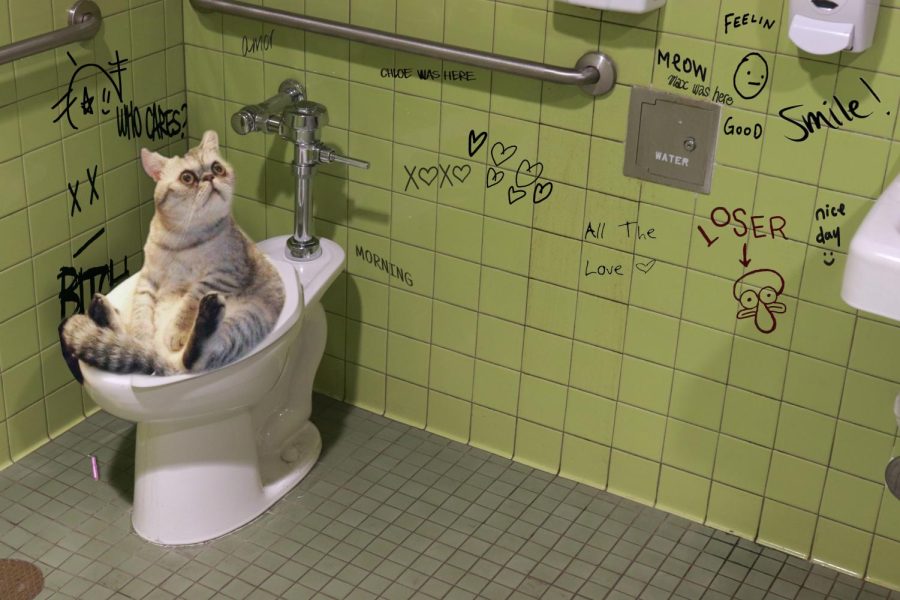How do you really feel on the subject of How to Dispose of Cat Poop and Litter Without Plastic Bags?

Introduction
As pet cat proprietors, it's important to bear in mind just how we dispose of our feline close friends' waste. While it might appear practical to purge feline poop down the bathroom, this technique can have damaging repercussions for both the atmosphere and human health and wellness.
Alternatives to Flushing
The good news is, there are safer and extra liable means to deal with feline poop. Think about the adhering to alternatives:
1. Scoop and Dispose in Trash
The most typical approach of throwing away pet cat poop is to scoop it right into an eco-friendly bag and toss it in the trash. Be sure to use a dedicated litter scoop and dispose of the waste without delay.
2. Usage Biodegradable Litter
Select naturally degradable pet cat litter made from products such as corn or wheat. These litters are eco-friendly and can be securely thrown away in the garbage.
3. Bury in the Yard
If you have a yard, think about burying feline waste in a marked area away from vegetable gardens and water resources. Make certain to dig deep enough to prevent contamination of groundwater.
4. Install a Pet Waste Disposal System
Buy a pet waste disposal system specifically made for pet cat waste. These systems use enzymes to break down the waste, lowering smell and environmental influence.
Health Risks
Along with environmental problems, flushing cat waste can also position health dangers to people. Feline feces may consist of Toxoplasma gondii, a bloodsucker that can trigger toxoplasmosis-- a potentially extreme illness, particularly for pregnant women and individuals with weakened body immune systems.
Ecological Impact
Flushing pet cat poop introduces dangerous virus and bloodsuckers into the supply of water, presenting a considerable danger to marine environments. These pollutants can negatively impact aquatic life and concession water quality.
Verdict
Responsible pet dog ownership extends beyond giving food and shelter-- it additionally entails proper waste monitoring. By avoiding purging cat poop down the bathroom and choosing different disposal techniques, we can decrease our environmental footprint and protect human health and wellness.
Why Can’t I Flush Cat Poop?
It Spreads a Parasite
Cats are frequently infected with a parasite called toxoplasma gondii. The parasite causes an infection called toxoplasmosis. It is usually harmless to cats. The parasite only uses cat poop as a host for its eggs. Otherwise, the cat’s immune system usually keeps the infection at low enough levels to maintain its own health. But it does not stop the develop of eggs. These eggs are tiny and surprisingly tough. They may survive for a year before they begin to grow. But that’s the problem.
Our wastewater system is not designed to deal with toxoplasmosis eggs. Instead, most eggs will flush from your toilet into sewers and wastewater management plants. After the sewage is treated for many other harmful things in it, it is typically released into local rivers, lakes, or oceans. Here, the toxoplasmosis eggs can find new hosts, including starfish, crabs, otters, and many other wildlife. For many, this is a significant risk to their health. Toxoplasmosis can also end up infecting water sources that are important for agriculture, which means our deer, pigs, and sheep can get infected too.
Is There Risk to Humans?
There can be a risk to human life from flushing cat poop down the toilet. If you do so, the parasites from your cat’s poop can end up in shellfish, game animals, or livestock. If this meat is then served raw or undercooked, the people who eat it can get sick.
In fact, according to the CDC, 40 million people in the United States are infected with toxoplasma gondii. They get it from exposure to infected seafood, or from some kind of cat poop contamination, like drinking from a stream that is contaminated or touching anything that has come into contact with cat poop. That includes just cleaning a cat litter box.
Most people who get infected with these parasites will not develop any symptoms. However, for pregnant women or for those with compromised immune systems, the parasite can cause severe health problems.
How to Handle Cat Poop
The best way to handle cat poop is actually to clean the box more often. The eggs that the parasite sheds will not become active until one to five days after the cat poops. That means that if you clean daily, you’re much less likely to come into direct contact with infectious eggs.
That said, always dispose of cat poop in the garbage and not down the toilet. Wash your hands before and after you clean the litter box, and bring the bag of poop right outside to your garbage bins.
https://trenchlesssolutionsusa.com/why-cant-i-flush-cat-poop/

I found that review about Don’t flush cat feces down the toilet when doing a lookup on the web. Do you know another person who is intrigued by Can You Flush Cat Poop Down The Toilet?? Take a moment to share it. Thank you for your time spent reading it.
View Website